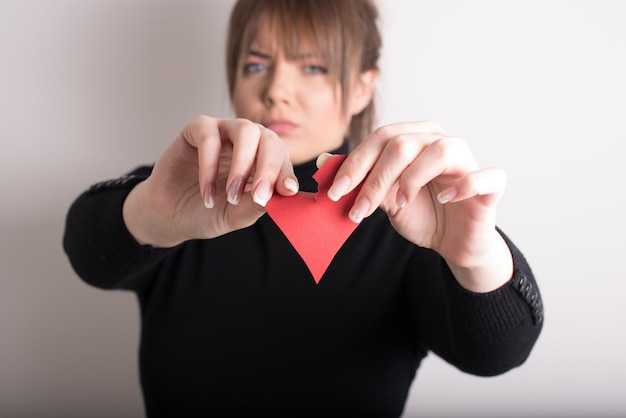You may believe you’re prepared for a true, committed relationship, but if you keep pouring all your emotional and romantic energy into someone who is stringing you along, emotionally unavailable, and has made it clear they don’t want a partnership, it’s time to wake up: you’re building a massive barrier between yourself and the real possibility of love. Today’s letter is from a woman who calls herself Carlen. She writes: “Hello Anna — I need your help to make sense of this situation because I’m completely bewildered. I can’t tell if I’m deceiving myself or if my instincts are right.” Okay — I’m marking the parts I want to revisit on a second read, but let’s unpack Carlen’s story to see what’s happening.
She explains that around two years ago she met a man in an online course focused on personal growth and healing from trauma. He identified with a dismissive-avoidant attachment style (DA), while she says she’d already done a lot of inner work and considered herself to have an earned secure attachment. (For those unfamiliar: attachment styles describe how our early relationship with caregivers affects how we relate to others later. Dismissive-avoidant people tend to pull away, dislike commitment, and struggle with emotional expression. “Secure,” ideally, means you feel reasonably safe in relationships and can spot red flags.) I’d guess Carlen’s long effort to “earn” security came from earlier insecure patterns — often people who had to work deeply on themselves previously tolerated poor behavior or chased partners who weren’t available.
She goes on to say she learned a great deal about dismissive-avoidant people because two of her ex-partners had that pattern; she invested her heart trying to understand them and improve those relationships. They eventually ended, but she developed empathy for the struggles people with that style face. She thought it might work out if she met a dismissive-avoidant partner who was genuinely committed to healing and becoming secure. She was very attracted to this new man because he seemed intensely devoted to his own healing; it was clearly a top priority for him. He spoke about resolving intergenerational trauma and wanting to be a good husband and father someday.
They became friends and started long video calls that lasted hours; they spoke about life goals, values, and how they might raise children — and the more she learned, the more she felt their visions lined up. She couldn’t believe someone so compatible existed. The catch: they lived on different continents. He was 32, she was 39, and he’d moved away from his country of origin a few years earlier — he’d lived in the region where he was for about four years. After a few months she confessed romantic feelings and told him she thought they were highly compatible. To her surprise, he said he was open to talking about a romantic relationship, even though he’d earlier claimed he didn’t do long-distance. It seemed he’d assumed she would move to be with him — something she couldn’t do because of health reasons. Once she told him she couldn’t relocate, he shut down the idea of being partners and refused even to consider moving himself despite her proposing alternatives. He insisted they stay friends, and she accepted, trying to move on, but it didn’t work.
Over time he began to invite her into video calls more and more, until they were on camera together nearly every morning and evening, sometimes for hours. She left it to him to initiate contact because he said he needed more space; she adapted. They built deep trust and a safe space in which they explored vulnerability. He sobbed in front of her; he revealed painful traumas and said he’d never felt so understood and loved. He told her being with her felt like joy, even “heaven,” and these statements made her believe he was in love — yet whenever she raised the subject, he denied it, saying he had already said they could only be friends. Despite this, his pull toward her was strong. They attempted boundaries and tried seeing each other less, but invariably returned to daily calls by his choice, and she agreed because she loved that time with him. Conflicts were rare, given their aligned values and the communication tools they both used to resolve issues quickly. She felt freer with him than she ever had with anyone; he said he felt the same. He told her she represented everything he wanted in a partner — and still, he wouldn’t be her partner.
He had never been in a romantic relationship before and claimed he’d only been “in love” once, with a woman who rejected him; they never dated, and he was still grieving that rejection years later. Before beginning his healing work, he couldn’t imagine living with a partner because he needed so much space and independence; recently, though, his desire for partnership had grown. After a year and a half of being pulled close and pushed away — him alternately drawing her in and insisting on friendship — she finally decided to go no contact because she couldn’t endure it when he talked about finding a woman who lived nearby and potentially dating other people. It’s been six months since they ended the friendship; three months of that has been complete no contact. She still misses him daily and remembers the beautiful, peaceful, joyful moments that felt safe. She keeps replaying the things he said that made her believe he loved her, while wondering how he could walk away from something so special and imagine finding someone else so easily, simply because he wanted someone local. She’s spent her life doing hard healing work to make relationships work, and nothing has matched what she had with him; realistically, she doubts she’ll find anything comparable again. (That’s a lot to unpack.) She tried meeting others but was disappointed by men who behaved in ways she won’t tolerate, and so she stopped actively searching, feeling it’s a waste of her time and energy. She asked him for a clear list of reasons why he wouldn’t be her partner so she could move on; he refused to give answers, became defensive when questioned, and the only explicit reason he offered was distance — which, to her, doesn’t justify letting go of someone she believes is the love of her life. She feels bewildered and helpless: how can she move forward and open to love again when this extraordinary-feeling connection still fell apart? It all seems pointless and hopeless. Please help, Carlen.”
To Carlen: here’s some clarity. Right now your perspective is clouded by pain. You are in a deep “crap-fit” — a pattern where you shape your life around someone or something unacceptable, a strategy many of us learned in childhood to survive. That pattern prevents true love from reaching you until you heal it. Rather than flattening the lens onto the person who hurt you, let’s focus on what you did and how to change it. You’re a wonderful person and this will turn out okay once you start confronting the reality of this connection and let that reality teach you the lessons you need to move toward a healthier relationship.
You met him in a trauma-healing community — those spaces can nurture real growth, but they also draw people who carry heavy wounds. You describe yourself as healed and secure, yet you’re profoundly attached to someone who doesn’t want you; that reveals unresolved attachment patterns. It’s not failure to admit that; it’s just where you’re at. Right now your behavior looks like insecure attachment: bending yourself around someone who treats you as emotional support while refusing to reciprocate fully. The dynamic is painfully familiar: you offer free emotional labor while the other person gains comfort and expression without committing. Think of it like a farmer who won’t buy the cow because he can get the milk for free — only in this case it’s free therapy and adoration, which removes the incentive for the other person to truly change or commit.
You’re experiencing cognitive dissonance: facts about what’s happening clash with the story you want to believe. That’s why you keep feeling confused. When trauma wounds are involved, it’s common to romanticize a situation and conjure a “magical future” rather than face the truth that something isn’t working. You may also be living out a “fixer” fantasy — wanting to heal someone else as a path to connection. That’s a risky, often painful strategy because genuine healing can’t be coerced and isn’t the same as suddenly falling in love with you. Healing for him might mean being truthful about what he does and doesn’t want, not starting a relationship he doesn’t actually feel. And the hardest but most liberating truth to accept is that you cannot change someone else into a partner; needing someone to become different to secure your love is a setup that seldom ends well.
So be gentle with yourself but honest: you’ve been showing signs of codependency by taking responsibility for his growth and tethering your happiness to his availability. The remedy requires two things: concrete tools to keep you grounded in reality and a circle of friends who will support you in staying awake to the truth. Community is vital — friends who will sit with you when letting go feels terrifying, who will remind you to choose self-care over clinging to an unavailable person. When abandonment wounds are deep, leaving an unsatisfying attachment can feel unbearable, which is why having steady companions matters.
Also beware of people or services that monetize your attachment — psychics, certain therapists, or coaches who profit from your continuing fixation. If someone benefits from keeping you stuck, it’s time to stop that payment and reclaim your freedom. When a healthy partner arrives, it will usually be a gradual, mutual process: they’ll show up both romantically and practically, and they will want to build a life with you in shared physical space. If it’s not that — if it’s only voice-on-screen intensity and avoidance of real-life togetherness — it’s friendship or something else, not a full partnership.
Your pattern of long, daily video calls blurred boundaries and let you try to meet all your needs through a screen. That “mesh” clouded judgment and kept you from tending to other parts of your life — health, friendships, work, and the ordinary shared experiences that make a real relationship (making a bed, groceries, holidays, home routines). Ask whether, unconsciously, you also favor an intense but distant connection because it allows passion without the practical risks of cohabiting life. If moving to be with him was impossible for health reasons — of course that’s legitimate — it’s also reasonable for someone to be reluctant to relocate for a new relationship; a move is a serious commitment. Yet his choice to prioritize a partner living nearby over building something with you is a legitimate expression of his preferences. It hurts, but his reluctance doesn’t mean you were less worthy.
Think of your energy as life force. You poured yourself into him — the “lemon-squeezing” metaphor fits: you extracted every drop of your attention, care, and time, and you’ve been left depleted. That outflow of emotional energy meant you had less to invest in your own well-being and fewer resources to attract someone who could reciprocate. When you give that much away to someone unavailable, you won’t register as available to others who are healthy and interested. The solution is to reclaim that energy: stop giving it away to someone who won’t return it and begin investing it back into your health, friendships, pursuits, and future.
You will have to experience the feelings that arise — the sadness for what might have been, the grief for those daily conversations — and you’ll need practical tools to manage them. Feelings are transient: painful now, but they pass. The truth is that the person you spent hours with on video blocked you from finding real, full love in a shared physical life. True partnership includes mundane, everyday intimacy and joint decisions — the life tasks that create deep connection over time. Marriage or long-term commitment can be beautiful when it’s with the right person who is present, reciprocal, and local — if that’s what you want, don’t trade it for a fantasy.
You’ve done important work already; don’t waste more of your precious life force. Your love is a rare and valuable thing, and many people would cherish it. The task now is to become selective about who receives it. Step back, let information and new encounters unfold naturally, and use clear criteria to assess potential partners. I also have a list of concrete signs of a good partner — print it and carry it with you so you can check your instincts when someone new appears (and, yes, if you ever find yourself on a long video call again, keep that checklist within reach). You can download it by clicking right here. See you very soon.


 “Cool-Girl-ism,” Magical Thinking and Limerence Keep You ALONE">
“Cool-Girl-ism,” Magical Thinking and Limerence Keep You ALONE">

 Your Love Won’t Last Without These 5 Things">
Your Love Won’t Last Without These 5 Things">
 If Food And Weight Control Your Life You’ll Want to Watch THIS">
If Food And Weight Control Your Life You’ll Want to Watch THIS">
 DON’T show this to your Husband unless.">
DON’T show this to your Husband unless.">
 Why You Always Feel Invisible & Get Talked Over — And How to Stop It">
Why You Always Feel Invisible & Get Talked Over — And How to Stop It">
 Why Traumatized People Can’t See RED FLAGS (4-video compilation)">
Why Traumatized People Can’t See RED FLAGS (4-video compilation)">
 When Avoidants Realize You Don’t Care Anymore пїЅпїЅ The Ultimate Power Shift">
When Avoidants Realize You Don’t Care Anymore �� The Ultimate Power Shift">
 Do you need a WIFE Translator?">
Do you need a WIFE Translator?">
 The TRUTH About Re-Attracting a Dismissive Avoidant After No Contact | Jordan Peterson">
The TRUTH About Re-Attracting a Dismissive Avoidant After No Contact | Jordan Peterson">
 These 12 ‘Normal’ Traits Are Actually Childhood Survival Mechanisms">
These 12 ‘Normal’ Traits Are Actually Childhood Survival Mechanisms">
 5 Signs it’s a Trauma Bond, not Love">
5 Signs it’s a Trauma Bond, not Love">